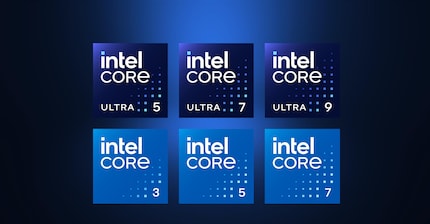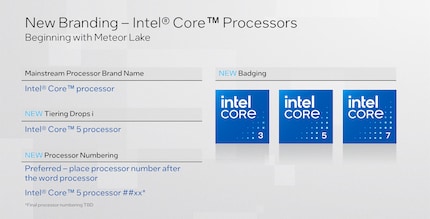
Bye-bye-i: Intel changes the naming of its processors
Intel has been adding an "i" to the name of its processors for over 15 years. This will be dropped in future. Instead, the company is introducing the "Ultra" designation.
Intel has decided to take this step because Meteor Lake marks a turning point in terms of design, production and architecture. The new naming is also intended to simplify the portfolio. The division into "Core" and "Core Ultra" is intended to better differentiate between mainstream and high-end chips.
Although the generation designation has been removed, it can still be seen in the processor number. It is not yet clear exactly what this designation will look like. In the Intel slides it looks something like this: Intel Core 7 ## xx. Intel intends to retain the prefixes "F", "K", "KF", "KS" and "T". It is therefore still possible to recognise from the designation whether a CPU can be overclocked, for example.
It is not yet clear exactly how "Core" and "Core Ultra" differ. In any case, the Core 9 is missing in the Core models and the Core 3 in the Core Ultra variants.
So not much will change. I personally don't mourn the "i". Although it is not officially declared what it stands for, it is obvious that it refers to Intel. As the name of the company is already at the beginning of the name anyway, it is superfluous.
It is a shame, however, that the generation designation can only be read from the model number. This makes it more difficult to find out which generation it is, especially for people who are not up to date.
Update: An earlier version of the article speculated differently about the designations. The information has now been supplemented with new information from Intel.
Cover photo: Kevin HoferFrom big data to big brother, Cyborgs to Sci-Fi. All aspects of technology and society fascinate me.
From the latest iPhone to the return of 80s fashion. The editorial team will help you make sense of it all.
Show all
